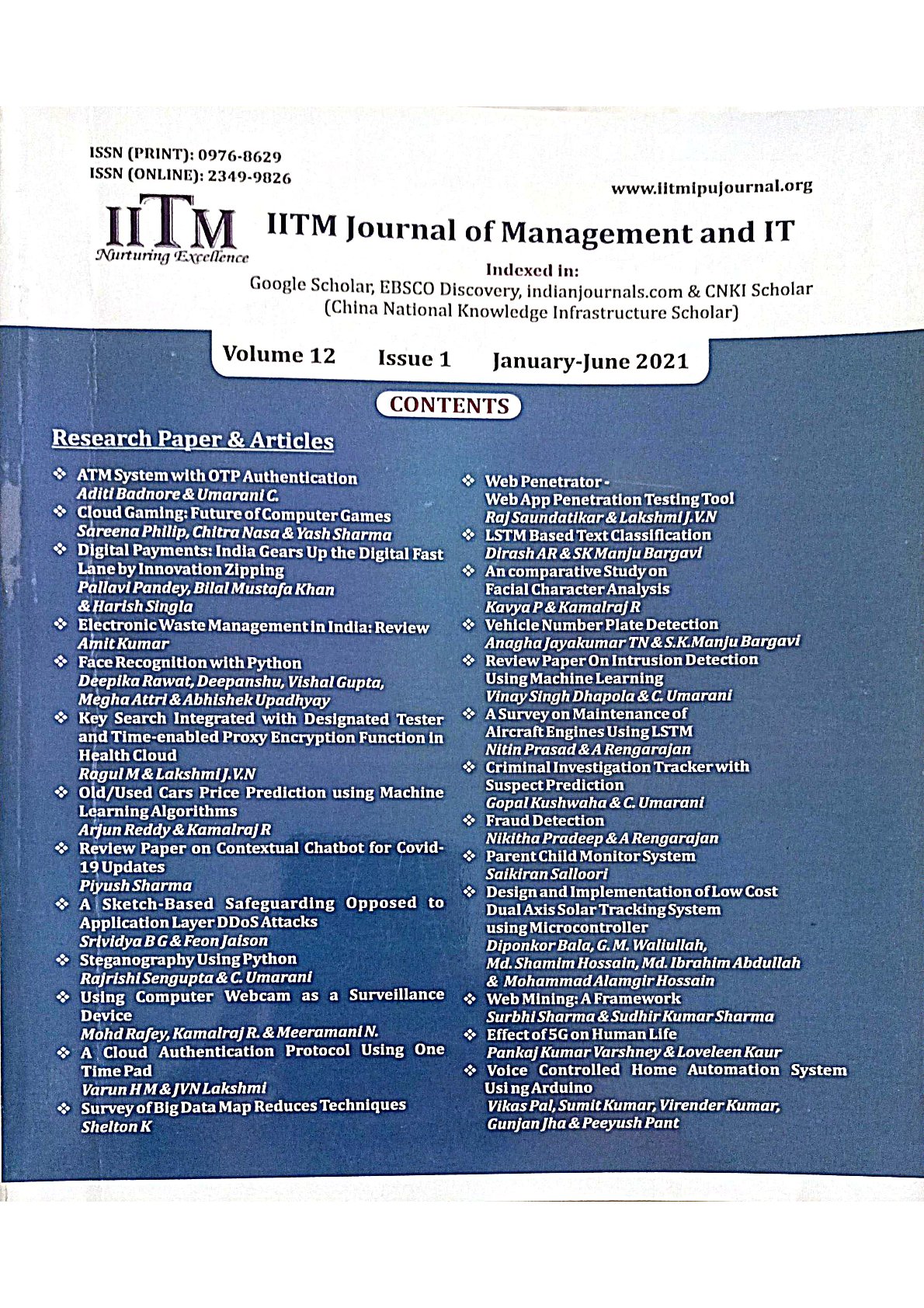A Survey on Maintenance of Aircraft Engines Using LSTM
Main Article Content
Abstract
What if a part of aircraft could let you know when the aircraft component needed to be replaced or repaired? It can be done with continuous data collection, monitoring, and advanced analytics. In the aviation industry, predictive maintenance promises increased reliability as well as improved supply chain and operational performance. The main goal is to ensure that the engines work correctly under all conditions and there is no risk of failure. If an effective method for predicting failures is applied, maintenance may be improved. The main source of data regarding the health of the engines is measured during the flights. Several variables are calculated, including fan speed, core speed, quantity and oil pressure and, environmental variables such as outside temperature, aircraft speed, altitude, and so on.
Sensor data obtained in real time can be used to model component deterioration. To predict the maintenance of an aircraft engine, LSTM networks is used in this paper. A sequential input file is dealt with by the LSTM model. The training of LSTM networks was carried out on a high performance large-scale processing engine. Machines, data, ideas, and people must all be brought together to understand the importance of predictive maintenance and achieve business results that matter.



